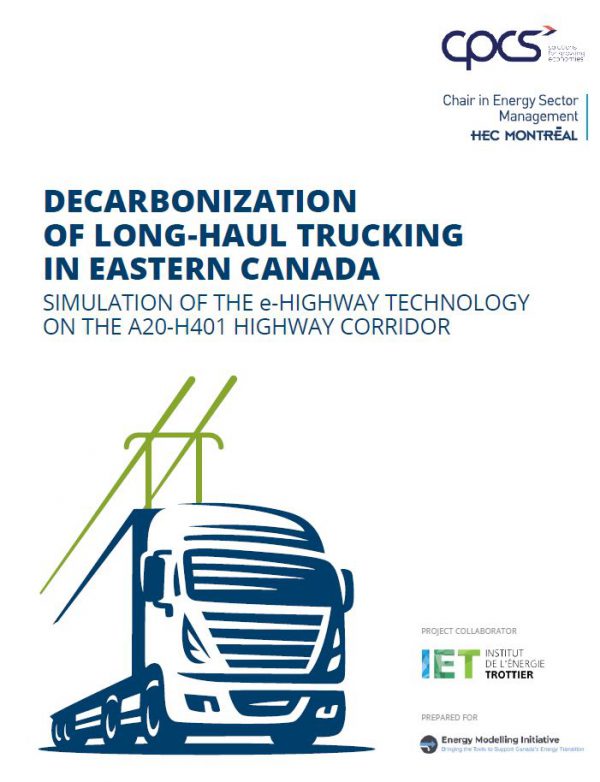Simulation of the e-highway technology
This simulation, sponsored by the Energy Modelling Initiative, is the first step in a study proposal developed by the Chair in Energy Sector Management (HEC Montréal), CPCS and the Institut de l’énergie Trottier (Polytechnique Montréal) in collaboration with government, university and private partners, to compare the costs and potential of different decarbonization technologies along the A20-H401 axis.
Summary
The initial infrastructure investment is often seen as a limit to large-scale deployment. But when compared with other zero-emission options, the catenary technology offers some advantages. First, it is already used in transportation (e.g., trams, trains) and second, trucks can run on either a hybrid or battery system when travelling off the electrified corridors. This flexibility combined with efficient use of electricity and mature catenary technology makes for a solid contender in the mix of potential options for decarbonizing road freight. The study simulates the potential of e-highway hybrid technology for the decarbonization of long-haul trucking on a 1,300 km highway corridor in Eastern Canada, connecting Quebec, Montreal, and Toronto up to the U.S. border (the A20-H401 corridor). The simulation is based on a GIS analysis of current flows of heavy vehicles (Class 8 and above), according to the present road capacity of the A20-H401, as this axis concentrates a significant part of long-haul trucking in Eastern Canada.

